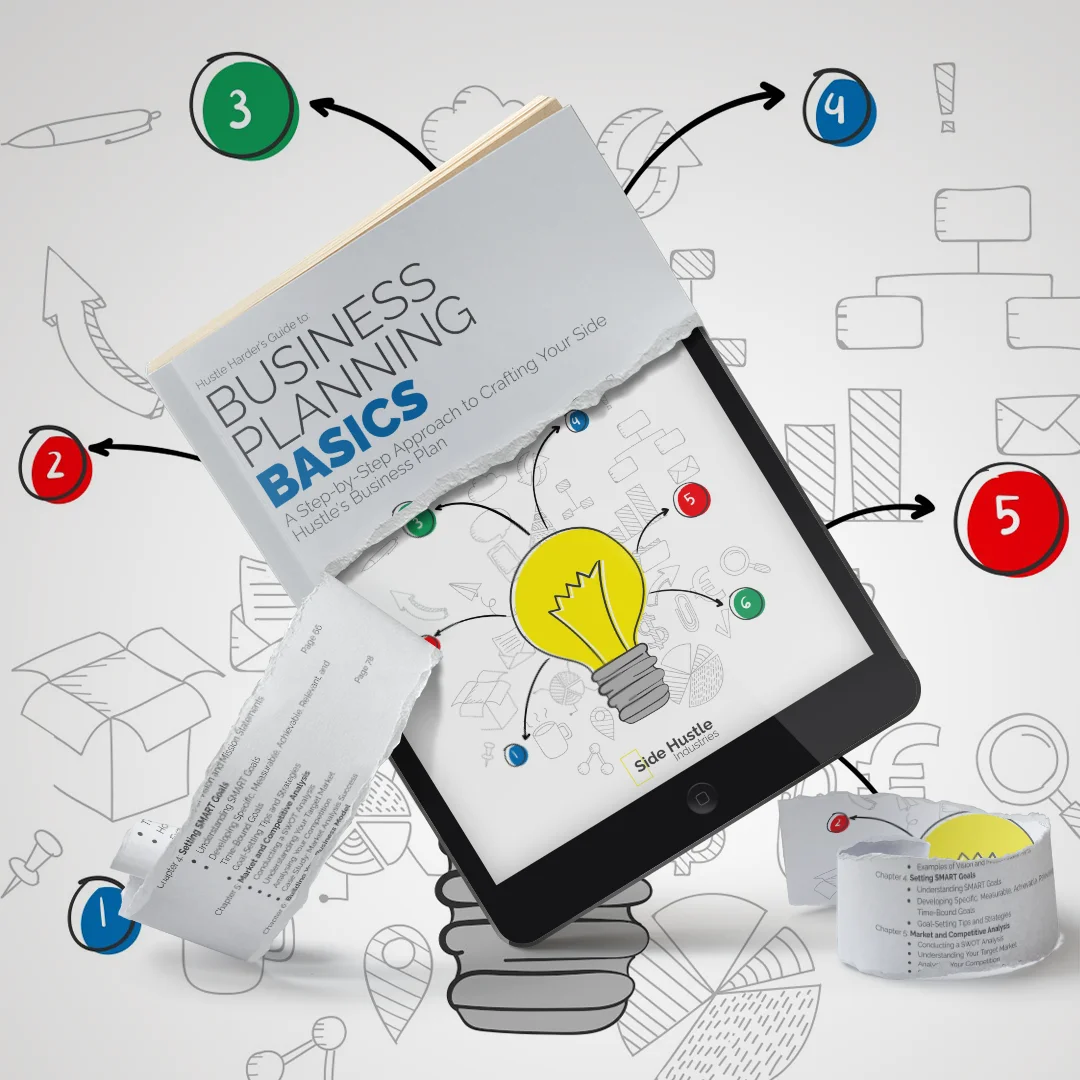
Developing SMART goals is a strategic and systematic approach to achieving your entrepreneurial objectives. By developing goals that are Specific, Measurable, Achievable, Relevant, and Time-Bound, you create a roadmap that guides your business planning and ensures that your efforts are focused and effective. Today, we will delve into the process of developing SMART goals, step by step, and provide practical examples to illustrate how this framework can be applied to various aspects of your side hustle.
Step 1: Start with a Clear Objective
Before you can develop SMART goals, you need to define a clear objective. Your objective is what you want to achieve, and it serves as the foundation for your goals. When identifying your objective, be as specific as possible. A well-defined objective acts as a North Star, providing a clear direction for your goal-setting process.
Example of a Clear Objective:
- “Launch a new e-commerce website to expand our online presence and increase sales.”
Step 2: Create Specific Goals
With your objective in mind, the next step is to create Specific goals. Specific goals are clear and well-defined. They answer the who, what, where, when, and why of your goal. A specific goal leaves no room for ambiguity and ensures that everyone involved knows exactly what is expected.
Example of Specific Goals:
- “Design a user-friendly e-commerce website with easy navigation.”
- “Integrate a secure online payment system to enhance the user experience.”
- “Include product descriptions and high-quality images for each item in the online catalogue.”
These specific goals outline the exact tasks that need to be accomplished to achieve the broader objective of launching a new e-commerce website.

Step 3: Make Goals Measurable
Measurable goals provide a quantifiable way to evaluate success. They are defined by specific criteria or metrics that allow you to track progress. When making your goals measurable, ask yourself: “How will I know when I’ve achieved this goal?” Assign numerical values or concrete metrics to your goals to ensure that they can be measured.
Example of Measurable Goals:
- “Increase website traffic by 30% within the first three months after launch.”
- “Achieve a 5% conversion rate for website visitors to make a purchase.”
- “Maintain a customer satisfaction rating of 4.5 or higher out of 5.”
These measurable goals provide clear metrics for success, allowing you to track and evaluate the effectiveness of your efforts.
Step 4: Ensure Goals Are Achievable
Achievable goals are realistic and attainable given the resources, time, and constraints at hand. While ambition is valuable, setting goals that are unattainable can lead to frustration and demotivation. When evaluating the achievability of your goals, consider your available resources and potential challenges.
Example of Achievable Goals:
- “Secure a budget of $10,000 for website development and marketing.”
- “Hire a web developer and a digital marketing specialist to support the project.”
- “Allocate three months to complete the website development, quality assurance, and marketing efforts.”
These achievable goals align with the available resources and constraints, making them realistic and attainable.
Step 5: Ensure Goals Are Relevant
Relevant goals align with your overall objectives and mission. They contribute to your business’s growth and success. It’s essential to ensure that your goals are relevant to your side hustle’s vision and mission. When evaluating the relevance of your goals, ask: “How does this goal contribute to the bigger picture?”
Example of Relevant Goals:
- “Increase website traffic to drive sales and grow our online presence.”
- “Achieve a higher conversion rate to improve revenue and customer engagement.”
- “Maintain high customer satisfaction to uphold our commitment to exceptional service.”
These relevant goals directly support the business’s vision and mission, making them integral to its success.

Step 6: Set Time-Bound Goals
Time-bound goals have a defined timeframe or deadline for completion. This component provides a sense of urgency and helps in time management. When setting time-bound goals, specify a clear deadline by which the goal should be achieved.
Example of Time-Bound Goals:
- “Launch the e-commerce website by the end of the second quarter.”
- “Increase website traffic by 30% within the first three months after launch.”
- “Maintain a customer satisfaction rating of 4.5 or higher out of 5 in each quarterly evaluation.”
These time-bound goals establish a sense of urgency and ensure that your efforts remain on track within a reasonable timeframe.
Step 7: Review and Refine
Once you have developed your SMART goals, take the time to review and refine them. Ensure that they meet all the criteria of being Specific, Measurable, Achievable, Relevant, and Time-Bound. Seek feedback from colleagues, mentors, or advisors to gain a fresh perspective and identify any potential gaps or areas for improvement.
Real-Life Example: Developing SMART Goals
Let’s revisit the objective of launching a new e-commerce website and develop SMART goals based on the steps outlined:
Objective: “Launch a new e-commerce website to expand our online presence and increase sales.”
Specific Goals:
- “Design a user-friendly e-commerce website with easy navigation.”
- “Integrate a secure online payment system to enhance the user experience.”
- “Include product descriptions and high-quality images for each item in the online catalogue.”
Measurable Goals:
- “Increase website traffic by 30% within the first three months after launch.”
- “Achieve a 5% conversion rate for website visitors to make a purchase.”
- “Maintain a customer satisfaction rating of 4.5 or higher out of 5 in each quarterly evaluation.”

Achievable Goals:
- “Secure a budget of $10,000 for website development and marketing.”
- “Hire a web developer and a digital marketing specialist to support the project.”
- “Allocate three months to complete the website development, quality assurance, and marketing efforts.”
Relevant Goals:
- “Increase website traffic to drive sales and grow our online presence.”
- “Achieve a higher conversion rate to improve revenue and customer engagement.”
- “Maintain high customer satisfaction to uphold our commitment to exceptional service.”
Time-Bound Goals:
- “Launch the e-commerce website by the end of the second quarter.”
- “Increase website traffic by 30% within the first three months after launch.”
- “Maintain a customer satisfaction rating of 4.5 or higher out of 5 in each quarterly evaluation.”
These SMART goals provide a clear roadmap for launching the e-commerce website. They are specific, measurable, achievable, relevant, and time-bound, ensuring that the business’s efforts are focused and effective.
The Power of SMART Goals
SMART goals provide a structured approach to goal setting that increases your chances of success. They offer clarity, motivation, accountability, efficiency, adaptability, and alignment with your business’s mission. By applying the SMART framework to your goal-setting process, you can turn your entrepreneurial dreams into actionable and attainable objectives.

*Also available on Amazon in Kindle, Soft Cover & Hard Cover formats. —> Click Here.
